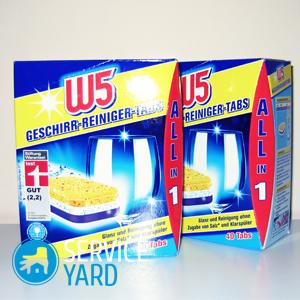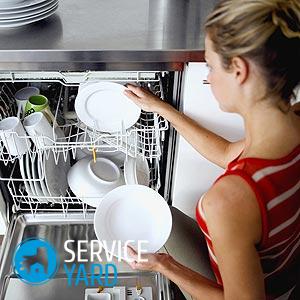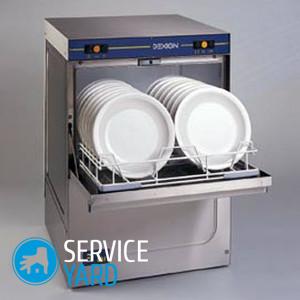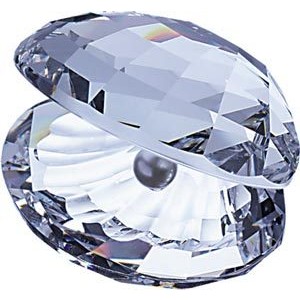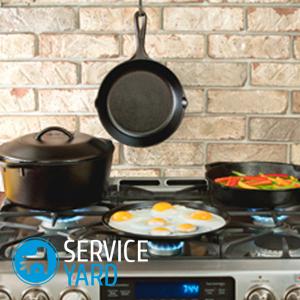What can not be washed in the dishwasher?

Surely, every owner of the dishwasher faced with such a question, what can and cannot be washed in the dishwasher, because the cleanliness and integrity of the dishes depend on it. We will help you solve this problem, as well as give you some useful tips.
to contents ↑How to wash dishes with a dishwasher - five rules
So that you do not have any problems with the process itself or with the cleanliness of kitchen utensils after they are processed in a washing technique, follow these rules.
Rule one - proper placement of dishes inside the machine
It has already become a normal phenomenon that 2 baskets for loading dishes are built into modern dishwashers. Based on such a device, it is easy to understand what can and cannot be washed in a dishwasher. Here the rules are:
- The basket, which is located below, is designed for large kitchen items, such as: pots, large dishes, pans.
- The top is for tableware, such as: plates, cups and much more.
Important! Spoons, forks, knives, as well as other cutlery, as a rule, are placed in a special small basket or a tray that comes with a dishwasher component or is sold separately.
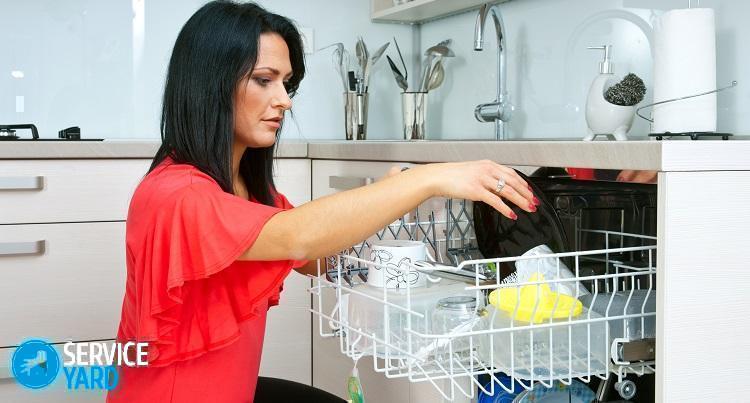
In order to optimally place the dishes inside the machine:
- Start the download from the bottom basket.
- Place huge plates in extreme corners, small ones - place closer to the center. In the middle, place a basket or a tray with cutlery.
- If there is no tray, then put the forks and spoons in the center, just on the rest of the dishes.
- Dishes should not interfere with the rotation of the rocker arm of the machine. That is why, do not place objects with long handles, such as pans and other, vertically.
- In a dishwasher, water is usually supplied from the bottom up, which is why put hollow objects such as mugs, plates, cups upside down.
- Do not lay them on their sides, because they will leave water and non-washed detergent on them.
- Do not stack cutlery on top of each other.
Important! Never overload the machine. If the dishes are extremely dirty, then the best option is to put the dishes not in all the cells of the basket, but through one.
Rule two - choose the right mode
The standard operation of the dishwasher includes:
- preliminary cleaning, that is, washing off food debris with cold water;
- Direct washing with hot water and detergent;
- rinse
- washing off detergent and drying.
Important! The program you have chosen, and this time and temperature of washing, must necessarily correspond to the type of dishes and the degree of pollution.
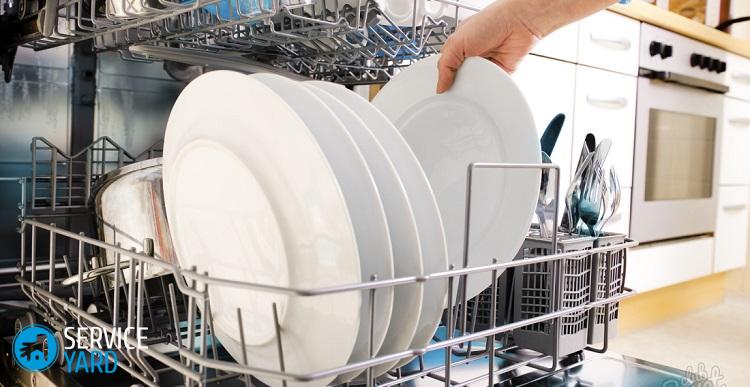
In addition, in dishwashers, programs such as:
- intensive washing, that is, at very high temperatures - up to 70 degrees;
- a program for not durable dishes, in which the water temperature is from 35 to 45 degrees;
- quick wash - when it is necessary to quickly rinse the dishes immediately after eating or after fatty foods.
All these additional options become very relevant if you are wondering what kind of dishes can not be washed in the dishwasher and is it possible wash crystal in the dishwasher.
Important! In addition, in dishwashers of medium and high quality, there is a function of pre-soaking. But it will be much simpler and more economical if, before loading the plates into the machine, you will clean off the dried-on food leftovers with their hands. Also do with burnt pots or pans.
Our grandmothers and parents used cast-iron frying pans for decades, and many still use this utensil. In our separate review, we described in detail how cast iron pans.

Rule Three - Use Detergents Properly
In dishwashers only special detergents.
In no case do not use ordinary gels, as well as powders for cleaning dishes - they give too much foam, because of which the technique can completely fail.
Detergents used in dishwashers can be divided into 2 types - powdery, as well as tableted.
Powders
The most common are powders. The average consumption of such a tool for 1 cycle of labor of the dishwasher is approximately 25-30 g.
Pills
Pills are considered more convenient. They are single-layer, multi-layer, as well as combined.
The latter are considered to be the most practical, because they combine both detergent components, rinse aid, and regenerating salt. In the event that the model of your dishwasher involves the use of such substances, you do not have to purchase three different products.
Important! However, keep in mind that the feedback from many users of such technology and means prove the opposite effect. The more the manufacturer includes functions in one tool, the less it gives the result for each important parameter.
Application Features:
- The consumption of tableted substances is approximately 1 tablet per 1 working cycle.
- It is not recommended to use tablet detergents, combining them with gentle washing programs, because the tablet does not have time to dissolve properly.
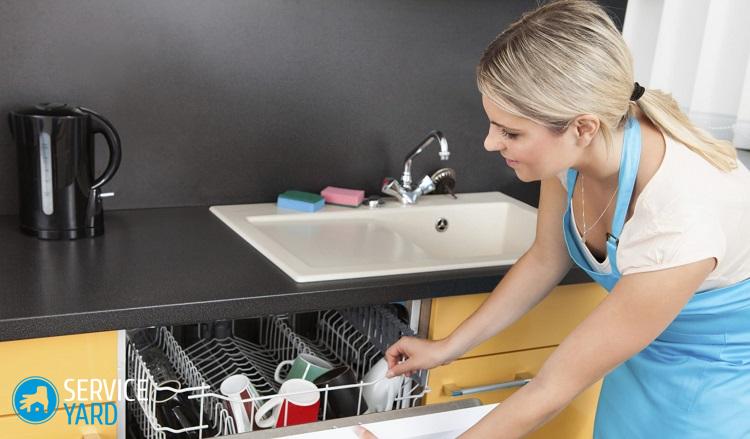
Detergent Properties
According to their properties, dishwashing detergents are divided into highly alkaline, as well as slightly alkaline, as a rule, they include enzymes.
Enzymes are enzyme supplements of biological origin that break down proteins, polysaccharides and fats that make up contamination. Detergents with enzymes are usually used to wash fragile dishes.
Important! More does not mean cleaner. Use the amount of detergent indicated in the instructions. In addition, if special instructions are not written on the packaging, do not use it to wash fragile or silver dishes.
Aids
In addition to the main washing and cleaning substances, for a more efficient use of the dishwasher, you must purchase a rinse aid. Is he:
- eliminates residues of detergent;
- gives shine to dishes;
- contributes to its quick drying.
Important! Rinse aid consumption is approximately 0.6-0.8 L for 11-13 operating cycles.
Rule Four - Watch for Water Hardness
The cleanliness of your dishes, which are washed in a dishwasher, also depends on the hardness of the water. It is because of hard water, and not from the fact that you did not decide on time that you should not wash in a dishwasher, white stains often remain on kitchen items.
Important! To reduce the hardness of the water, and accordingly the formation of scale, you can also use purified water. In our separate review we will show you how to choose filters for water purification in the apartment.
To achieve water softening, use regenerating salt. The capacity for it in the cars is quite large - by 1.5-2 kg. This volume is enough for a long time.
Important! Lime from hard water can settle on the heating parts of the machine, resulting in damage to the machine. Therefore, salt is also necessary for the safety of the device.
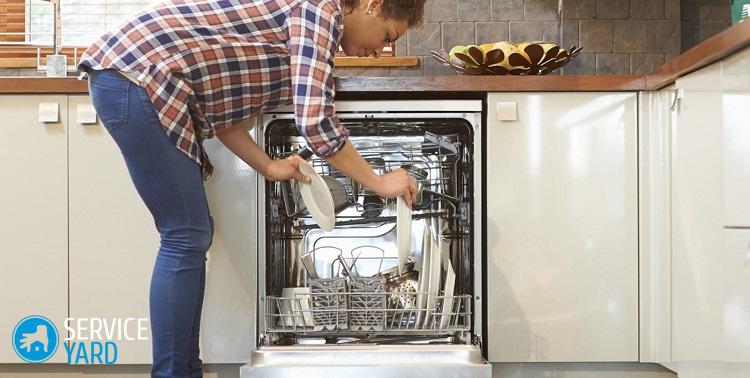
Rule Five - Take Care of Your Dishwasher
Absolutely every technique likes to be looked after. Dishwashers are no exception. In order for your machine to serve you faithfully and faithfully for many years, follow these tips:
- From time to time, clean the filter on which the washed away food remains settle.
- Regularly clean the basket for dishes - they are quite easy to remove.
- Use extra products to better care for your dishwasher.
to contents ↑Important! It is recommended that every 15-20 working cycles use a degreaser in the form of a powder or gel substance. It helps eliminate accumulated fat from the inside of the machine. For more information on how to care for the device, read our post “How to clean a dishwasher at home?”.
What should not be washed with a dishwasher?
The traditional method of washing, with dishwashing liquid, brush and sponge, has not been canceled yet! And for some dishes you still have to apply the manual processing method so as not to spoil it.
So, what dishes can not be washed in the dishwasher:
- In no case can cast iron, enameled, and copper utensils be washed in a dishwasher: cast iron will be covered with rust, enamel will crack, and copper utensils may lose their shape.
- Utensils with decor and fine finishes take on a worn and worn appearance over time.
- Wooden spoons and other wood products will deteriorate, scratch or crack. If you do not mind changing often, then you can wash them with all the other dishes in the car.
- High-quality and good knives are quite expensive, which is why do not risk it.
- Crystal, especially thin. Leftover food can scratch it, and small cracks may appear from high temperatures.
- If you are thinking about whether it is possible to wash aluminum utensils in a dishwasher, the answer here is unequivocal - you can’t. Old items will be strongly oxidized under the influence of alkaline and acidic substances that make up detergents. Over time, holes can form on them from such processing at all. For newer, anodized dishes, this approach is also unacceptable. Utensils made of such metal lose their luster and become noticeably cloudier.
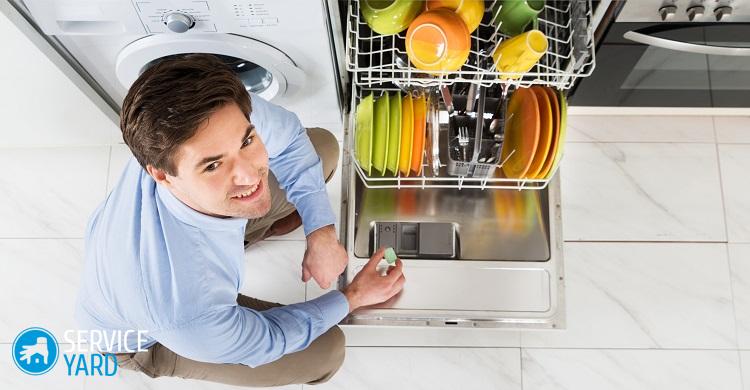
Important! To make washing dishes safe - both for household items themselves and for household appliances, additionally follow these rules:
- Tools must be wiped after washing - so that they do not become rusty.
- Remove any hair or similar debris from the brushes to prevent clogging.
Features of washing glassware
Modern glassware made from strong and reliable glass is perfect for cleaning in a dishwasher. But you must carefully and correctly place it inside the machine. Here it is necessary to take into account such features of the material:
- Objects that are too close to each other may beat against each other during machine vibration. This by itself will lead to the appearance of cracks and chips, which will reduce the shelf life of the dishes.
- If the glass is thin, it is necessary to use special programs for gentle washing, which guarantee a more delicate approach to objects.
- When installing the dishes in the dishwasher, you must use the clamps, as well as levers for fixing. This will help protect your items from bumps as well as from falling.
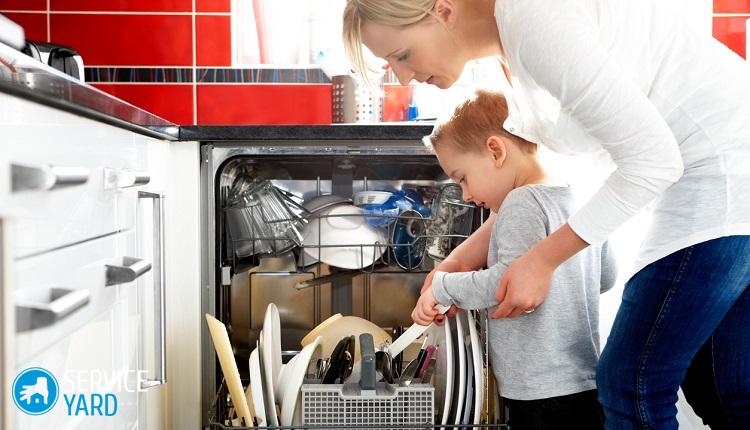
Features of washing porcelain items
Both faience and porcelain are perfectly washed in the dishwasher. However, there are no special requirements for the temperature regime and the use of any special means.
Useful tips are as follows:
- In the event that the dishes are gilded, it is better to wash them not with boiling water, but with warm water, using a gentle mode.
- The same thing must be said about saucer cups with a pattern on top of the glaze.
- If the pattern is under the surface of the glaze, then it is not afraid of dimming.
Features of washing plastic:
- In a dishwasher, you can not wash any plastic or plastic kitchen appliance, but only heat-resistant.
- Such products are very light and must be fixed with clamps. Otherwise, the dishes will walk inside the machine when washing. So - it may break or it will be poorly washed, and there will be many extraneous sounds.
Stock footage
We hope that our tips will help you keep your cutlery intact and safe, as well as protect your dishwasher from unwanted premature breakage.




